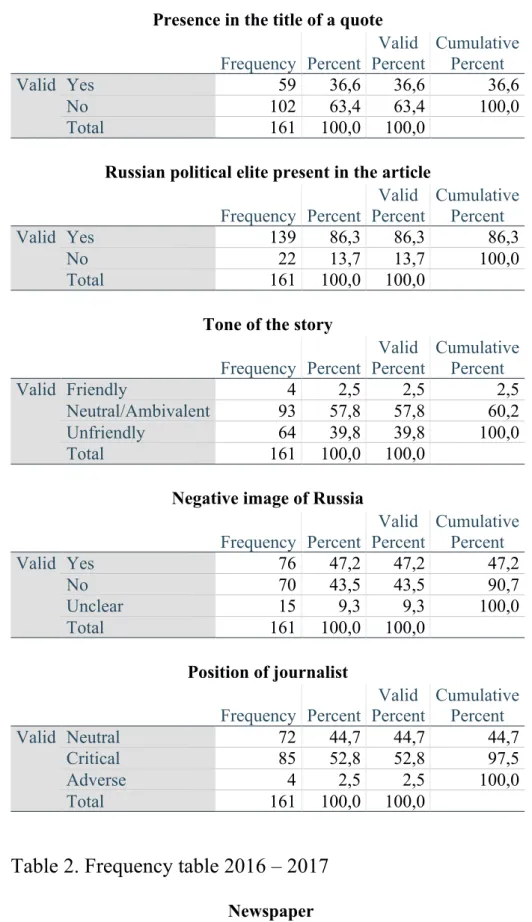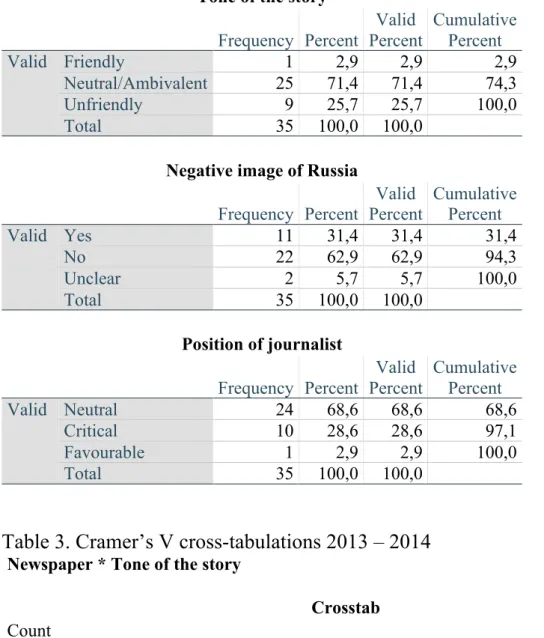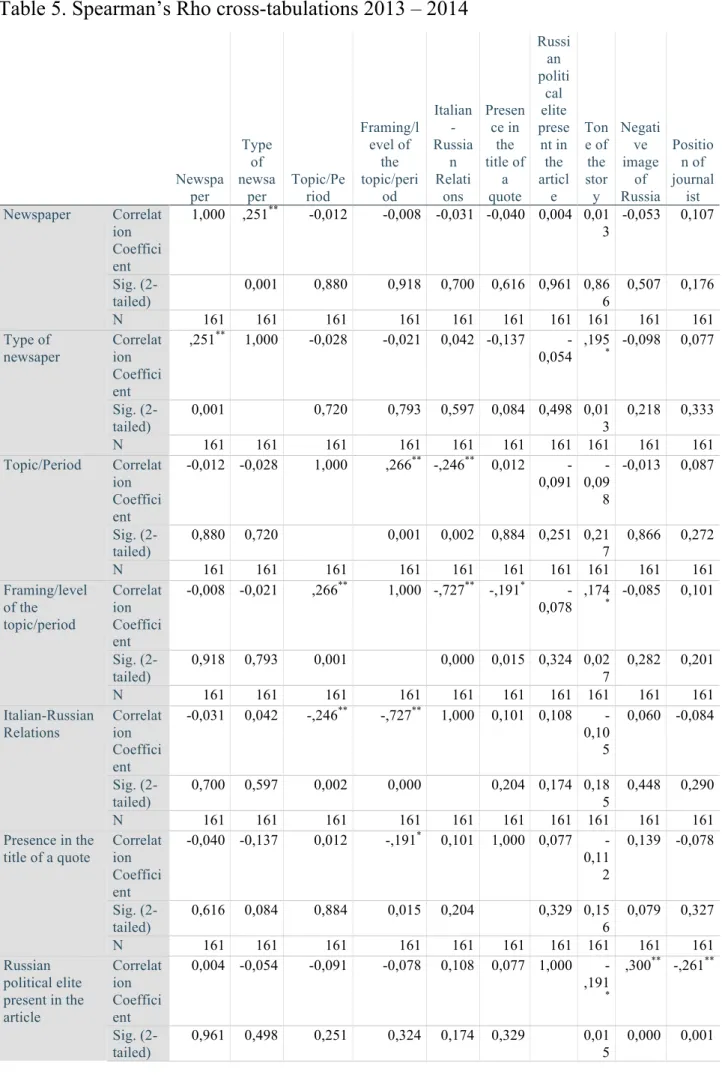It was treated as a concept of political parallelism and especially in the context of Italian journalism. Politics in the media and media in politics: a comparative study of the relationship between media and political systems in three European countries.
Models of journalism: the Italian case
The first years of television were characterized by the monopoly of public service radio and television companies, RAI – Radiotelevisione italiana. Italy's broadcasting policy has historically been characterized by 'the heavy use of television as a political battleground.49' Despite the birth of commercial television having the potential to depoliticize the system, the emergence of Silvio Berlusconi's three-channel national conglomerate as the only private competitor to the three-channel public broadcasting company, created the conditions for further politicization.
Press and Power: historical excursus in the Italian journalism .1 Pre-Fascism Press
The press during and after Fascism
In this dependence of the media system, the stability of the political system is evident. In the history of the 20th century, it has often been the reflection of political, but also social changes.
From Silvio Berlusconi to Beppe Grillo: the politics of spectacle
The anomaly of Berlusconi is that he has made politics and the Italian media less transparent than they should be, casting long shadows over a series of decisions made by center-right governments over the past twenty years. During the first years, the difference between the two television schedules between Mediaset and the public service broadcaster RAI was quite significant.
Russian-Italian relation in the recent past years
The reason must be found in the difficulty of reconciling the responsibilities arising from the framework of Euro-Atlantic economic ties and strategic plans with the Russian Federation. This cautious and dialogue-oriented approach was not welcomed by all members of the European Union. However, in December 2015, first in the Permanent Representatives Committee, and then in the European Council, Italy insisted that the renewal of the punishment system was not.
Pier Paolo Celeste, since May 2015 is the Moscow Director of the ICE, ITA – Italian Trade Agency. Due to the structural character and the broad scope of the plan, the Italian companies that wanted to work in Russia began to adapt their strategy to the new political-economic framework. The activities of the Office for Economic and Commercial of the Italian Embassy in Moscow are concentrated in the sectors in which the opportunities of bilateral cooperation.
Therefore, the extension of European sanctions would have further damaged Italian companies142.
Image and coverage of Russia in Italy
The Italian Communist Party was founded in 1921 as the Italian section of the Communist International, with the aim of revolution and the building of a dictatorship of the proletariat. In 1943 the name of the party changed from PCDI - Communist Party of Italy to PCI - Italian Communist Party. Stalin has always seen Togliatti as the most authoritative and astute communist leader in the West.
Togliatti announced, in fact, the availability of the Italian Communist Party to participate in the government led by Pietro Badoglio. The myth of the USSR linked to the cult of Stalin has characterized the rise of the PCI in Italy and the image of the communists. The party's attitude towards the Soviet Union became in the 50s a real cult of the person of Stalin, represented as a political genius, especially in the party newspaper L'Unità.
At the opening of the factory, the Italian newspaper l'Unità commented: 'The Soviet Union is the symbol of cooperation between the two countries.
Chapter 2. Positions of Italian newspapers towards Russia-related issues in 2010s
3. Russia-related issues in the Italian press of 2010s
Periods of analysis
At the end of June 2013, the President of the Russian Federation Vladimir Putin signed a new law that states that the dissemination of information about non-traditional sexual relationships among young people. The cost of the Olympics amounts to almost 50 billion dollars152, making Sochi the most expensive Olympics in history. At the end of the same month, pro-Russian demonstrations were held in Sevastopol, where a Russian citizen was illegally elected as mayor.
The sanctions contributed to the collapse of the Russian ruble and the Russian financial crisis, as well as changing international stability, trade flows and relations. The next day, the Government of the Russian Federation issued the Decree on the Implementing Measures of the Decree of the President of the Russian. At the end of June 2016, President Putin signed another decree extending the counter-sanctions until December 31, 2017161.
After recapturing the city, the Syrian army continued to advance in the regions around Palmyra166.
4. Methodology
- Overview of the methods
- Selection of newspaper
- Sampling
- Variables and the coding process
A content analysis of the entire population was impractical, so population sampling was necessary. A first data collection was done in the single newspaper archives, but due to the limitations of the search engines Il Corriere della Sera, La Stampa and La Repubblica, we then used the library's news archive. As the variable itself explains, the type of newspaper is related to the type.
Story topic/period is defined as the main Russia-related topic discussed or mentioned in the news story. The evaluation dimension of the comment/Position of the journalist is intended to understand the general position of the journalist. The next step of quantitative content analysis is the coding process using a coding scheme and coding categories.
Therefore, the categories friendly, unfriendly and neutral are chosen for the tone of the story.
5. Results and Discussion: the positions of Italian newspapers
Statistical analysis
The negative image of Russia appears mainly in relation to Ukraine: 41 articles out of 85, as well as the journalist's critical position: 40 articles. First of all, it is noticeable that the statistically significant value is that between the variable type of newspaper and tone of the story. The latter, however, is sensibly connected with the changing Italy-Russia relations and the changing tone of the story.
The study of the correlation coefficient in the case of variable presence of the Russian political elite is extremely relevant: in fact, the coefficient assumes values that are statistically significant with the variable tone of the story, negative image of Russia and the position of journalist. In the first period, we observe that La Repubblica, Il Corriere della Sera and La Stampa show statistically significant correlations in all the cross-tabulations between the three variables summarizing the representation of Russia – negative image of Russia, the tone of the story and the position of the journalist. Rho, it means the connection between the variables, the tone of the story and the negative image of Russia.
The case of Il Sole 24 Ore is completely different, where all cross-correlations between the three variables have a coefficient value that is statistically significant.
Interpretation of the newspaper discourse
Taking into account the values of Spearman's Rho for each newspaper also in the second period, we first note that with regard to Il Corriere della Sera, none of the cross-correlations between the three variables indicating the representation of Russia appear to have a value to be statistically significant. In the case of La Stampa, the correlation between the variable tone of the story and the position of journalist is rather statistically significant; but it is not between the tone of the story and the negative image of Russia, nor between the negative image of Russia and the position of journalist. Rather, the difference is between the mainstream press and the economic press: the representation of Russia does not seem to depend on the political orientation of the newspaper, but rather on its kind.
The issue of sanctions and counter-sanctions was also covered a little: 2 articles by Il Corriere della Sera, 1 by La Repubblica and La Stampa, and 4 by Il Sole 24 Ore. The most important are the articles of Il Sole 24 Ore journalist Antonella Scott. a long read, economic insight aimed at people in the business industry. Most of the stories were covered from Moscow, from the Maidan revolution to the Crimean referendum.
Headlines are intended to impress and give an idea of the type of article, such as 'Analysis.
Conclusions
The limitations of this research lie primarily in the time period: the conducted study is a content analysis of the news about Russia in the Italian media for a period of 10 months, which is not continuous. The current and future coverage of Russia may be the same or may be different. The analysis of the articles provides a macro-level picture of how Italian media covered the news about Russia.
In order to understand whether there was political parallelism and whether the political orientation of the daily affected the international coverage, we should have included a right-wing newspaper like Il Giornale in the analysis. Quantitative content analysis provided support for identifying whether there were correlations between the type of newspaper and the negative image of Russia. We hope that this research provides an insight into the Italian news coverage of Russia in different periods; it can contribute to the volume of academic works in the field of interest.
This research has shown that the differentiating element of coverage of international issues is not the political perspective, but rather the attention paid to economic topics.
Bibliography
L'Unità, Estratto da http://www.unita.tv/focus/linciucio-populista-lega-m5s-nel-nome-di-trump-e-putin/. Mattarella a Mosca: "La Russia usa la sua influenza contro le armi chimiche". Estratto da https://www.theguardian.com/world/2016/nov/15/aleppo-airstrikes-resume-as-russia-announces-major-syria-offensive. Il Blog delle Stelle, Estratto da http://www.ilblogdellestelle.it/giornalismokiller_la_misura_e_colma.html.
Retrieved from http://www.putin-itogi.ru/cp/wp-content/uploads/2013/05/Report_ENG_SOCHI-2014_preview.pdf. European Media Systems survey 2010: results and documentation. http://www.mediasystemsineurope.org/files/EMSS2010_Report.pdf. Business Insider, retrieved from http://www.businessinsider.com/why-sochi-is-by-far-the-most-expensive-olympics-ever-2014-1?IR=T.
Estratto da http://www.ssoar.info/ssoar/handle/document/11575. Le analisi; Quindi dall'Ucraina al Kirghizistan. 28 aprile 2017) Beppe Grillo, non travisare il Press Freedom Index.
Appendices
The code sheet
Tables Table 1. Frequency table 2013 – 2014




